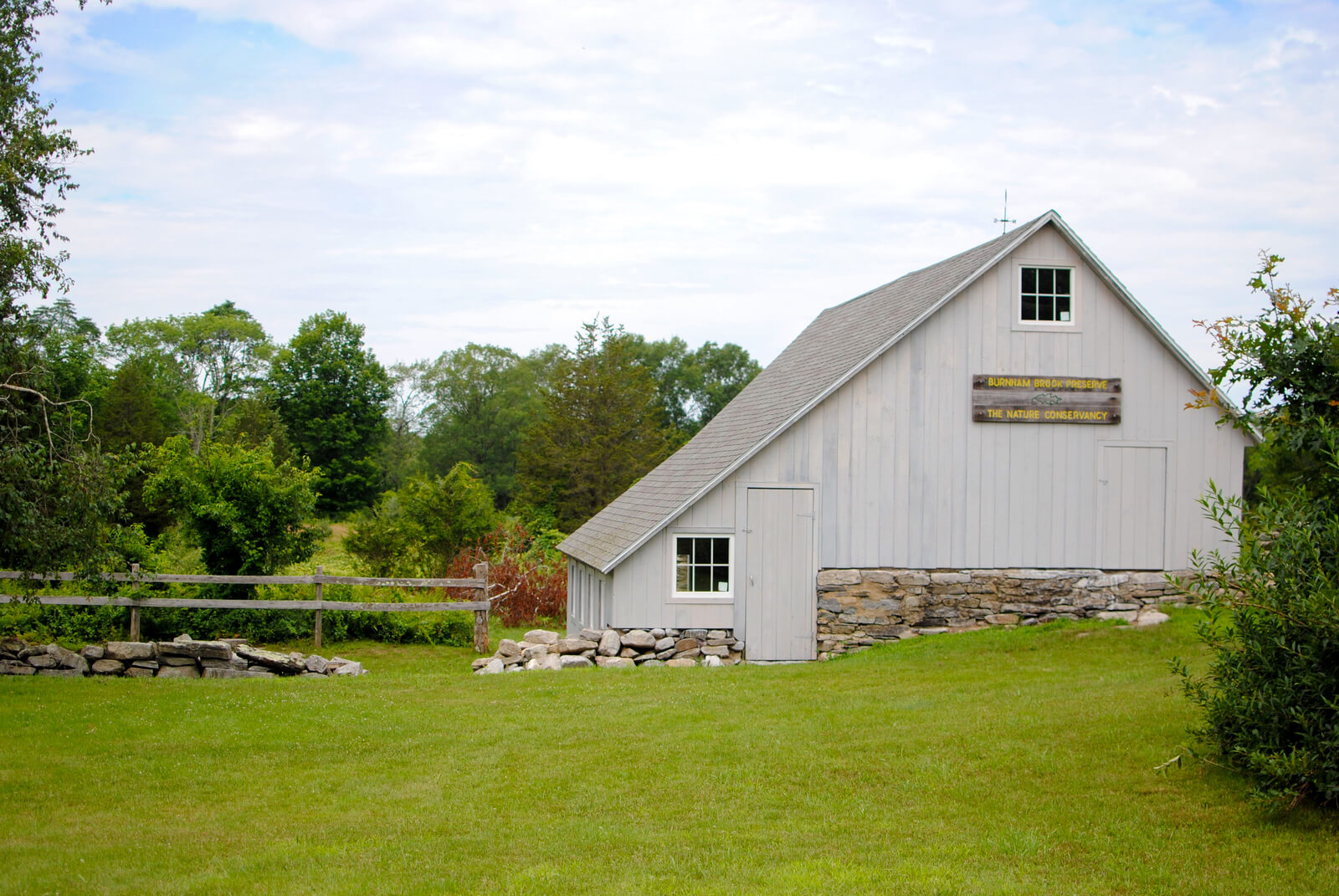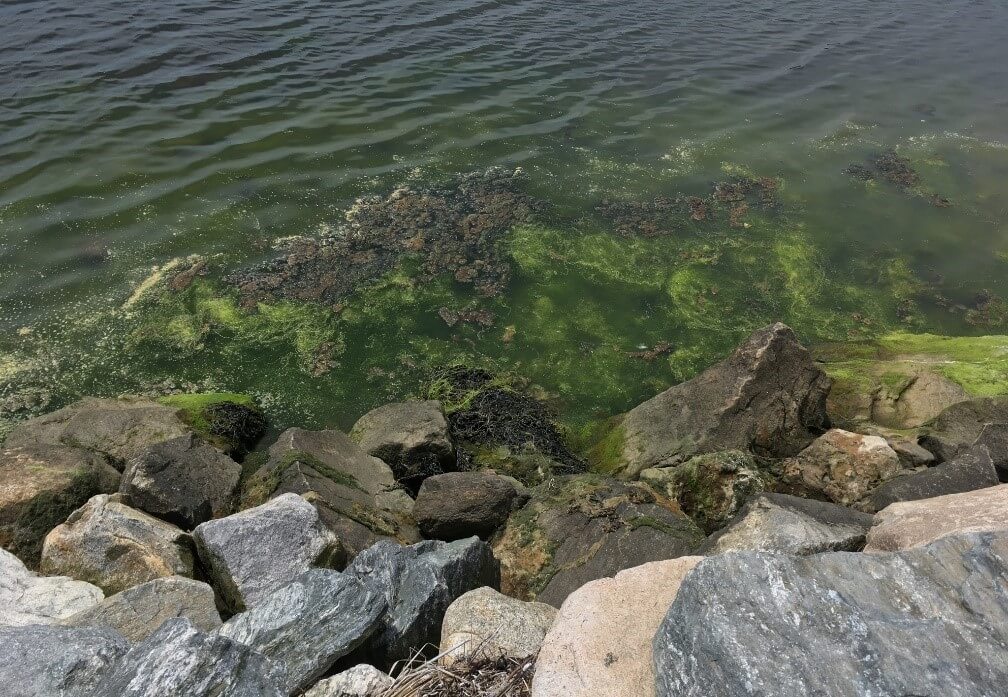Keeping the Promise on our Preserves with Upgraded Septic Systems
Keeping the Promise on our Preserves with Upgraded Septic Systems
April 30, 2019 | By: Christianne Marguerite
Conventional septic systems were not designed to remove nitrogen from wastewater. The Nature Conservancy has invested in wastewater treatment upgrades for cleaner water on our preserves in Connecticut and New York. On Long Island, an innovative wastewater wetland and two nitrogen-reducing septic systems replace six cesspools. In Connecticut, a new tank and Geomatrix leaching system will replace an old, failing wastewater disposal system. Upgrading and modernizing septic systems is crucial to restoring healthy water quality in Long Island Sound.
The mission of The Nature Conservancy is to conserve the lands and waters on which all life depends. One way we’ve kept that promise for over 65 years is by protecting critical forests, grasslands, streams and wetlands through a network of preserves. Some of the Conservancy’s well-known preserves include historic structures that support our conservation work as visitor centers, offices and housing. But many of these structures have outdated or deteriorated septic systems that put our groundwater, rivers and Long Island Sound at risk.
Conventional septic systems currently in use in many areas of Connecticut and New York were not designed to remove nitrogen from wastewater. In recent years we’ve learned that nitrogen pollution from fertilizers and wastewater is one of the leading threats to Long Island Sound. Switching to alternative wastewater treatment systems capable of reducing significantly more nitrogen is a crucial step to restoring the health of our coastal waters. With an advanced pretreatment unit and a sewage disposal field, nitrogen-reducing systems can replace outdated septic tanks. The technology is designed not only to reduce the amount of excess nitrogen discharged, but also to produce cleaner wastewater. Since some units have electrical and mechanical components, such as pumps, blowers, floats, alarms, diffusers and electronic control panels, periodic maintenance and inspections by a qualified contractor are necessary.
The maintenance and effectiveness vary by the specifics of each nitrogen-reducing system. Some units can be costlier to install than conventional systems, but for businesses and homeowners in proximity of waterways, modernizing wastewater treatment is vital for keeping pollution out of drinking water, streams and the Sound. By reducing nitrogen pollution entering the Sound’s harbors and bays we can decrease rampant algal blooms and low oxygen conditions that kill our marine life and threaten coastal economies. One Cape Cod homeowner is glad she made the switch to protect coastal waters for generations to come – and so are we! Here at The Nature Conservancy, we are proud to invest in septic system upgrades for cleaner, healthier water on some of our preserves around the Sound.
Leading Innovation in New York:
In Cold Spring Harbor, on Long Island, NY, a nitrogen-reducing wetland has replaced old cesspools at the Conservancy’s Uplands Farm Sanctuary, a 97-acre former dairy farm that now supports an office for Conservancy staff. This natural system relies on beneficial soil microbes – found in the roots of plants – to convert nitrogen from wastewater into harmless gas. The wastewater is then pumped over woodchips and routed into a shallow drainfield for further biological treatment. This innovative system was designed in partnership with the Stony Brook Center for Clean Water Technology and supported by grants from the Long Island Sound Futures Fund and Suffolk County. Along with two nitrogen-reducing septic systems also installed on the land, this project replaces six cesspools and will remove 90% of nitrogen in raw wastewater through natural processes.
Underground view of the treatment process and components.
About 70% of homeowners in Suffolk County rely on septic systems for their wastewater disposal and Long Island’s coastal waters frequently experience harmful algal blooms. The Long Island Nitrogen Action Plan (LINAP), identifies nitrogen pollution sources, establishes nitrogen reduction goals and outlines an implementation plan to achieve them. Suffolk County’s Reclaim Our Water Septic Improvement Program supports installation of innovative and alternative technologies approved for onsite wastewater treatment. Businessowners and homeowners throughout the county can apply for financial assistance to replace aging cesspools and septic systems with modern alternatives that reduce nitrogen pollution.
“Our goal is to design systems that are smaller, less expensive and more effective” says Chris Clapp, marine scientist at the Conservancy’s Long Island Chapter. The systems are engineered to allow partners at the Center for Clean Water Technology and the local health department to conduct constant monitoring at many points during treatment. “We can test which components are working well and how we can potentially magnify performance while eliminating elements that aren’t serving a pollution reduction function”. Because the preserve and office are open to the public, signs and information are available for visitors to learn about the systems and the importance of wastewater treatment for healthy drinking water and coastal ecosystems. The final objective is to “walk the talk” says Chris. “We have campaigned the County to allow new technologies and are asking residents to install upgrades so we felt it important to be role models and leaders by practicing what we preach.”
Keeping the Promise in Connecticut:
On the other side of the Sound, the Conservancy is currently overseeing a septic update on its Burnham Brook Preserve in East Haddam, CT. This 1,122-acre preserve protects the watershed of the Eightmile River, including 4.5 miles of the Burnham Brook and Strongs Brook. Over 180 bird species have been identified on the preserve, and there are healthy populations of many native plants and wildlife. Richard H. Goodwin, a founder of The Nature Conservancy, donated this important conservation area along with his home to the organization. “The river within the preserve provides Atlantic salmon habitat in nearly pristine condition” says David Gumbart, director of land management at the Conservancy’s CT chapter. “Updating the septic system will help protect clean water migratory fish depend on in the Eightmile River and all the way to Long Island Sound.”
The project is supported by the Community Foundation of Middlesex County and although construction is still underway, the plan is to replace the old septic tank and drywell with a new 1,000-gallon tank and distribution pipe leading to a Geomatrix leaching system. In addition to using sand, stone and filter fabric to treat the wastewater, shallow drainfield systems like Geomatrix take advantage of microbial activity in soil to reduce the amount of nitrogen entering groundwater.
https://www.geomatrixsystems.com/gst_area/GST_drawings.html
While more effective than the technology it will replace, alternative systems designed to denitrify wastewater between the septic tank and the drain field are not currently permitted for installation at single family homes in Connecticut. Every other coastal state in the east from Maine to South Carolina has a program to oversee approval and installation of alternative technologies. The Conservancy believes when properly managed and maintained, these systems are an important tool for restoring healthy water quality. That is why we are working with state and local leaders to improve access to effective technologies so residents and businesses can choose proven systems that reduce nitrogen pollution and protect healthy conditions in Connecticut’s lakes, rivers and coastal waters.





